-
95articlesSort byLatested
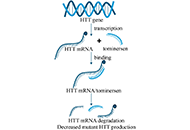 Therapeutic approaches for repeat expansion diseases: a comprehensive reviewOpen AccessMini ReviewRepeat expansion diseases (REDs) are genetic disorders caused by unusual expansions of DNA sequences within certain genes. They cause several neurodegenerative diseases including Huntington’s dise...Afsana BhuiyanPublished: December 25, 2024 Explor Neuroprot Ther. DOI: 10.37349/ent.2024.00095
Therapeutic approaches for repeat expansion diseases: a comprehensive reviewOpen AccessMini ReviewRepeat expansion diseases (REDs) are genetic disorders caused by unusual expansions of DNA sequences within certain genes. They cause several neurodegenerative diseases including Huntington’s dise...Afsana BhuiyanPublished: December 25, 2024 Explor Neuroprot Ther. DOI: 10.37349/ent.2024.00095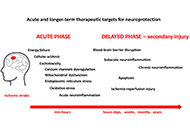 Exploring therapeutical targets and innovative treatments for ischemic stroke: a comprehensive reviewOpen AccessReviewThis review focuses on the current advances in the field of therapeutic targets and treatments for stroke. Stroke is a major health problem worldwide, with significant impacts on morbidity and morta...Lidija RadenovicPublished: November 20, 2024 Explor Neuroprot Ther. DOI: 10.37349/ent.2024.00094
Exploring therapeutical targets and innovative treatments for ischemic stroke: a comprehensive reviewOpen AccessReviewThis review focuses on the current advances in the field of therapeutic targets and treatments for stroke. Stroke is a major health problem worldwide, with significant impacts on morbidity and morta...Lidija RadenovicPublished: November 20, 2024 Explor Neuroprot Ther. DOI: 10.37349/ent.2024.00094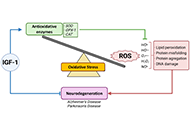 Potentialities of IGF-1 for regulating oxidative stress in neuroinflammation and neurodegeneration: theoretical reviewOpen AccessReviewInsulin-like growth factor-1 (IGF-1) elicits a variety of effects on the regulation of oxidative stress, a topic that remains shrouded in controversy. This intricate regulation plays a pivotal role ...Macarena Lorena Herrera ... Claudia Beatriz HereñúPublished: October 31, 2024 Explor Neuroprot Ther. DOI: 10.37349/ent.2024.00093
Potentialities of IGF-1 for regulating oxidative stress in neuroinflammation and neurodegeneration: theoretical reviewOpen AccessReviewInsulin-like growth factor-1 (IGF-1) elicits a variety of effects on the regulation of oxidative stress, a topic that remains shrouded in controversy. This intricate regulation plays a pivotal role ...Macarena Lorena Herrera ... Claudia Beatriz HereñúPublished: October 31, 2024 Explor Neuroprot Ther. DOI: 10.37349/ent.2024.00093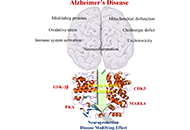 Protein kinases as therapeutic targets for Alzheimer’s disease: a brief reviewOpen AccessReviewAlzheimer’s disease (AD) is a progressive and incurable neurodegenerative disorder, with an unknown etiology and a multifactorial pathophysiology characterized by protein misfolding, neuroinflamma...Isabela Marie Fernandes Silva ... Claudio Viegas Jr.Published: October 28, 2024 Explor Neuroprot Ther. DOI: 10.37349/ent.2024.00092
Protein kinases as therapeutic targets for Alzheimer’s disease: a brief reviewOpen AccessReviewAlzheimer’s disease (AD) is a progressive and incurable neurodegenerative disorder, with an unknown etiology and a multifactorial pathophysiology characterized by protein misfolding, neuroinflamma...Isabela Marie Fernandes Silva ... Claudio Viegas Jr.Published: October 28, 2024 Explor Neuroprot Ther. DOI: 10.37349/ent.2024.00092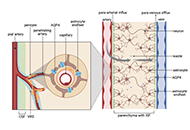 Impaired glymphatic clearance is an important cause of Alzheimer’s diseaseOpen AccessMini ReviewAlzheimer’s disease (AD) is the leading cause of dementia worldwide. The disease is characterized by the abnormal accumulation of amyloid β (Aβ) protein creating neuritic plaques, hyperphosphory...Iyawnna Hazzard ... Forshing LuiPublished: October 24, 2024 Explor Neuroprot Ther. DOI: 10.37349/ent.2024.00091
Impaired glymphatic clearance is an important cause of Alzheimer’s diseaseOpen AccessMini ReviewAlzheimer’s disease (AD) is the leading cause of dementia worldwide. The disease is characterized by the abnormal accumulation of amyloid β (Aβ) protein creating neuritic plaques, hyperphosphory...Iyawnna Hazzard ... Forshing LuiPublished: October 24, 2024 Explor Neuroprot Ther. DOI: 10.37349/ent.2024.00091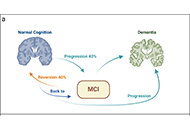 Reversion or compensation of mild cognitive impairment to normal cognition: strategies to prevent the development of Alzheimer’s disease continuumOpen AccessPerspectiveAlzheimer’s disease continuum has been described as the progressive stages of the disease over a long period. This progression can be categorized into three main stages: preclinical, mild cognitiv...Marina Avila-Villanueva, Jesús AvilaPublished: September 27, 2024 Explor Neuroprot Ther. DOI: 10.37349/ent.2024.00090
Reversion or compensation of mild cognitive impairment to normal cognition: strategies to prevent the development of Alzheimer’s disease continuumOpen AccessPerspectiveAlzheimer’s disease continuum has been described as the progressive stages of the disease over a long period. This progression can be categorized into three main stages: preclinical, mild cognitiv...Marina Avila-Villanueva, Jesús AvilaPublished: September 27, 2024 Explor Neuroprot Ther. DOI: 10.37349/ent.2024.00090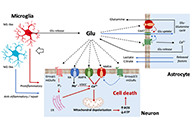 Possible roles of heteroreceptor complexes in excitotoxic processesOpen AccessReviewExcitotoxicity represents a neuropathological process, describing the toxic actions of excitatory neurotransmitters, where the excessive or prolonged activation of glutamate receptors triggers a cas...Diego Guidolin ... Luigi F. AgnatiPublished: September 24, 2024 Explor Neuroprot Ther. DOI: 10.37349/ent.2024.00089
Possible roles of heteroreceptor complexes in excitotoxic processesOpen AccessReviewExcitotoxicity represents a neuropathological process, describing the toxic actions of excitatory neurotransmitters, where the excessive or prolonged activation of glutamate receptors triggers a cas...Diego Guidolin ... Luigi F. AgnatiPublished: September 24, 2024 Explor Neuroprot Ther. DOI: 10.37349/ent.2024.00089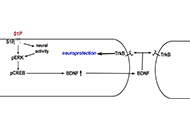 Lysophospholipid receptors in neurodegeneration and neuroprotectionOpen AccessReviewThe central nervous system (CNS) is one of the most complex physiological systems, and treatment of CNS disorders represents an area of major medical need. One critical aspect of the CNS is its lack...Eric BirgbauerPublished: August 22, 2024 Explor Neuroprot Ther. DOI: 10.37349/ent.2024.00088
Lysophospholipid receptors in neurodegeneration and neuroprotectionOpen AccessReviewThe central nervous system (CNS) is one of the most complex physiological systems, and treatment of CNS disorders represents an area of major medical need. One critical aspect of the CNS is its lack...Eric BirgbauerPublished: August 22, 2024 Explor Neuroprot Ther. DOI: 10.37349/ent.2024.00088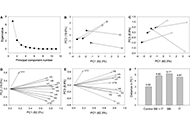 Quantitative analysis of the effects of acoustic neurostimulation on the neuropsychology of healthy adultsOpen AccessLetter to the EditorTo quantitatively analyze the effects of acoustic neurostimulation on the symptoms of depression, anxiety, stress, and sleep quality in healthy workers. Eleven physiological and psychological variab...Radiance C. Bouldin ... Jonghoon KangPublished: August 21, 2024 Explor Neuroprot Ther. DOI: 10.37349/ent.2024.00086
Quantitative analysis of the effects of acoustic neurostimulation on the neuropsychology of healthy adultsOpen AccessLetter to the EditorTo quantitatively analyze the effects of acoustic neurostimulation on the symptoms of depression, anxiety, stress, and sleep quality in healthy workers. Eleven physiological and psychological variab...Radiance C. Bouldin ... Jonghoon KangPublished: August 21, 2024 Explor Neuroprot Ther. DOI: 10.37349/ent.2024.00086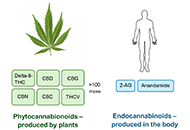 Phytocannabinoids—Evaluation of their therapeutic role in neuroinflammationOpen AccessReviewNeuroinflammation can be caused by disease, aging, infection, brain injury, toxicity, or stress. It is a contributory factor in the neuropathology of serious conditions that include multiple scleros...Sharon Smith ... David HealPublished: August 22, 2024 Explor Neuroprot Ther. DOI: 10.37349/ent.2024.00087
Phytocannabinoids—Evaluation of their therapeutic role in neuroinflammationOpen AccessReviewNeuroinflammation can be caused by disease, aging, infection, brain injury, toxicity, or stress. It is a contributory factor in the neuropathology of serious conditions that include multiple scleros...Sharon Smith ... David HealPublished: August 22, 2024 Explor Neuroprot Ther. DOI: 10.37349/ent.2024.00087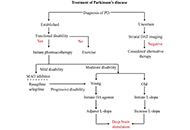 An overview of the role of monoamine oxidase-B in Parkinson’s disease: implications for neurodegeneration and therapyOpen AccessReviewParkinson’s disease (PD) is a neurodegenerative disorder characterized by both non-motor and motor symptoms, due to the loss of dopamine-producing neurons in the brain. Monoamine oxidase-B (MAO-B)...Praveen Kumar Chandra Sekar ... Ramakrishnan VeerabathiranPublished: July 14, 2024 Explor Neuroprot Ther. DOI: 10.37349/ent.2024.00085
An overview of the role of monoamine oxidase-B in Parkinson’s disease: implications for neurodegeneration and therapyOpen AccessReviewParkinson’s disease (PD) is a neurodegenerative disorder characterized by both non-motor and motor symptoms, due to the loss of dopamine-producing neurons in the brain. Monoamine oxidase-B (MAO-B)...Praveen Kumar Chandra Sekar ... Ramakrishnan VeerabathiranPublished: July 14, 2024 Explor Neuroprot Ther. DOI: 10.37349/ent.2024.00085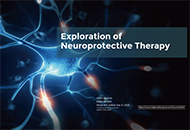 Vitactions: vitamins for the brainOpen AccessPerspectiveA novel concept has been recently put forward in the mind/body interface (https://doi.org/10.37349/ent.2024.00074). The new concept has led to a new word: vitaction. Vitactions offer benefits to the...Rafael FrancoPublished: July 01, 2024 Explor Neuroprot Ther. DOI: 10.37349/ent.2024.00084
Vitactions: vitamins for the brainOpen AccessPerspectiveA novel concept has been recently put forward in the mind/body interface (https://doi.org/10.37349/ent.2024.00074). The new concept has led to a new word: vitaction. Vitactions offer benefits to the...Rafael FrancoPublished: July 01, 2024 Explor Neuroprot Ther. DOI: 10.37349/ent.2024.00084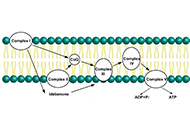 The potential positive effects of coenzyme Q10 on the regeneration of peripheral nerve injuryOpen AccessReviewPeripheral nerve injuries (PNIs) constitute a significant concern as they predominantly affect young and productive age groups of the population, causing social and economic pressure on patients. PN...Ahmed Mead ... Süleyman KaplanPublished: June 21, 2024 Explor Neuroprot Ther. DOI: 10.37349/ent.2024.00083
The potential positive effects of coenzyme Q10 on the regeneration of peripheral nerve injuryOpen AccessReviewPeripheral nerve injuries (PNIs) constitute a significant concern as they predominantly affect young and productive age groups of the population, causing social and economic pressure on patients. PN...Ahmed Mead ... Süleyman KaplanPublished: June 21, 2024 Explor Neuroprot Ther. DOI: 10.37349/ent.2024.00083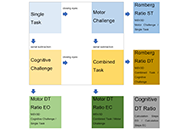 Cognitive-motor interference in multiple sclerosis and healthy controls: results from single, dual, and triple task posturographyOpen AccessOriginal ArticleAim: This article is based on our previous research, which was presented as a poster at the ECTRIMS Congress 2018 and published as a conference abstract (https://www.professionalabstracts.com/ect...Patrik Althoff ... Tanja Schmitz-HübschPublished: June 12, 2024 Explor Neuroprot Ther. DOI: 10.37349/ent.2024.00082
Cognitive-motor interference in multiple sclerosis and healthy controls: results from single, dual, and triple task posturographyOpen AccessOriginal ArticleAim: This article is based on our previous research, which was presented as a poster at the ECTRIMS Congress 2018 and published as a conference abstract (https://www.professionalabstracts.com/ect...Patrik Althoff ... Tanja Schmitz-HübschPublished: June 12, 2024 Explor Neuroprot Ther. DOI: 10.37349/ent.2024.00082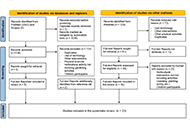 Effect of gardening physical activity on neuroplasticity and cognitive functionOpen AccessSystematic ReviewBackground: The beneficial effects of gardening as a form of physical activity have garnered growing interest in recent years. This research aimed to evaluate the effect of gardening as a physica...Antonio G. LentoorPublished: June 05, 2024 Explor Neuroprot Ther. DOI: 10.37349/ent.2024.00081
Effect of gardening physical activity on neuroplasticity and cognitive functionOpen AccessSystematic ReviewBackground: The beneficial effects of gardening as a form of physical activity have garnered growing interest in recent years. This research aimed to evaluate the effect of gardening as a physica...Antonio G. LentoorPublished: June 05, 2024 Explor Neuroprot Ther. DOI: 10.37349/ent.2024.00081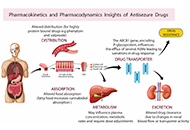 Advances in pharmacogenomics: optimizing antiepileptic drug therapy for drug-resistant epilepsyOpen AccessReviewEpilepsy, a complex neurological disorder, is influenced by intricate interactions within cortical, hippocampal, or thalamocortical neuronal networks, presenting a genetically complex condition with...Amna Shahid ... Sameen AbbasPublished: May 28, 2024 Explor Neuroprot Ther. DOI: 10.37349/ent.2024.00080
Advances in pharmacogenomics: optimizing antiepileptic drug therapy for drug-resistant epilepsyOpen AccessReviewEpilepsy, a complex neurological disorder, is influenced by intricate interactions within cortical, hippocampal, or thalamocortical neuronal networks, presenting a genetically complex condition with...Amna Shahid ... Sameen AbbasPublished: May 28, 2024 Explor Neuroprot Ther. DOI: 10.37349/ent.2024.00080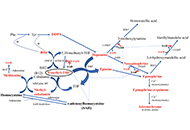 Diverse avenues of research support the transmethylation theory of psychosis: implications for neuroprotectionOpen AccessReviewTransmethylation in the context of psychiatry has historically referred to the enzymatic transfer of a methyl group from one biochemical to another, whose resulting function can change so dramatical...Christine L. MillerPublished: May 15, 2024 Explor Neuroprot Ther. DOI: 10.37349/ent.2024.00079
Diverse avenues of research support the transmethylation theory of psychosis: implications for neuroprotectionOpen AccessReviewTransmethylation in the context of psychiatry has historically referred to the enzymatic transfer of a methyl group from one biochemical to another, whose resulting function can change so dramatical...Christine L. MillerPublished: May 15, 2024 Explor Neuroprot Ther. DOI: 10.37349/ent.2024.00079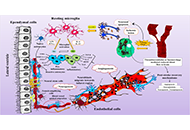 Cerebral stroke-induced neurogenesis: insights and therapeutic implicationsOpen AccessReviewStroke, one of the leading causes of global morbidity and mortality, results from disrupted cerebral blood circulation, leads to cellular damage or death. Ischemic stroke, the predominant subtype, r...Mydhili Radhakrishnan ... Sumana ChakravartyPublished: April 26, 2024 Explor Neuroprot Ther. DOI: 10.37349/ent.2024.00078
Cerebral stroke-induced neurogenesis: insights and therapeutic implicationsOpen AccessReviewStroke, one of the leading causes of global morbidity and mortality, results from disrupted cerebral blood circulation, leads to cellular damage or death. Ischemic stroke, the predominant subtype, r...Mydhili Radhakrishnan ... Sumana ChakravartyPublished: April 26, 2024 Explor Neuroprot Ther. DOI: 10.37349/ent.2024.00078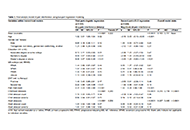 Lifetime stressors relate to invisible symptoms of multiple sclerosisOpen AccessOriginal ArticleAim: Childhood stressors can increase adult stress perception and may accumulate over the lifespan to impact symptoms of multiple sclerosis (MS). Growing evidence links childhood stressors (e.g.,...Carri S. Polick ... Sarah A. StoddardPublished: April 22, 2024 Explor Neuroprot Ther. DOI: 10.37349/ent.2024.00077
Lifetime stressors relate to invisible symptoms of multiple sclerosisOpen AccessOriginal ArticleAim: Childhood stressors can increase adult stress perception and may accumulate over the lifespan to impact symptoms of multiple sclerosis (MS). Growing evidence links childhood stressors (e.g.,...Carri S. Polick ... Sarah A. StoddardPublished: April 22, 2024 Explor Neuroprot Ther. DOI: 10.37349/ent.2024.00077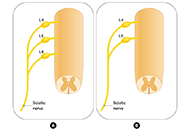 Neuronal plasticity in dorsal root ganglia following sciatic nerve injuryOpen AccessMini ReviewIt is widely known that each tissue has unique mechanisms to respond to injury and maintain homeostasis effectively. Although peripheral nerves have limited regeneration capacity, they conduct a com...Burcu Delibaş ... Süleyman KaplanPublished: April 17, 2024 Explor Neuroprot Ther. DOI: 10.37349/ent.2024.00076
Neuronal plasticity in dorsal root ganglia following sciatic nerve injuryOpen AccessMini ReviewIt is widely known that each tissue has unique mechanisms to respond to injury and maintain homeostasis effectively. Although peripheral nerves have limited regeneration capacity, they conduct a com...Burcu Delibaş ... Süleyman KaplanPublished: April 17, 2024 Explor Neuroprot Ther. DOI: 10.37349/ent.2024.00076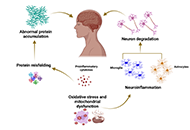 Biomarkers in neurodegenerative diseases: a broad overviewOpen AccessReviewDegeneration and dysfunction of neurons in the brain are hallmarks of neurodegenerative diseases. Over the past decades, significant efforts have been devoted to the development and validation of bi...Sathish Selvam, Velpandi AyyavooPublished: April 16, 2024 Explor Neuroprot Ther. DOI: 10.37349/ent.2024.00075
Biomarkers in neurodegenerative diseases: a broad overviewOpen AccessReviewDegeneration and dysfunction of neurons in the brain are hallmarks of neurodegenerative diseases. Over the past decades, significant efforts have been devoted to the development and validation of bi...Sathish Selvam, Velpandi AyyavooPublished: April 16, 2024 Explor Neuroprot Ther. DOI: 10.37349/ent.2024.00075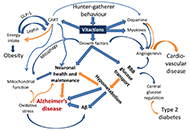 “Vitaction” deficiency: a possible root cause for multiple lifestyle disorders including Alzheimer’s diseaseOpen AccessPerspectiveBehavioural environment and behavioural responses of an individual are known to affect multiple aspects of physiology including neuroendocrine and growth factor signalling, angiogenesis, stem cell d...Milind Watve, Ashwini Keskar SardeshmukhPublished: April 07, 2024 Explor Neuroprot Ther. DOI: 10.37349/ent.2024.00074
“Vitaction” deficiency: a possible root cause for multiple lifestyle disorders including Alzheimer’s diseaseOpen AccessPerspectiveBehavioural environment and behavioural responses of an individual are known to affect multiple aspects of physiology including neuroendocrine and growth factor signalling, angiogenesis, stem cell d...Milind Watve, Ashwini Keskar SardeshmukhPublished: April 07, 2024 Explor Neuroprot Ther. DOI: 10.37349/ent.2024.00074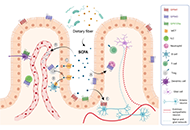 Targeting short-chain fatty acids receptors signalling for neurological disorders treatmentOpen AccessPerspectiveShort-chain fatty acids (SCFAs) play a key role regulating immune and metabolic homeostasis. Consequently, dysregulation in SCFA levels is involved in the pathogenesis of autoimmune, inflammatory, m...Carolina Prado, Rodrigo PachecoPublished: March 19, 2024 Explor Neuroprot Ther. DOI: 10.37349/ent.2024.00073
Targeting short-chain fatty acids receptors signalling for neurological disorders treatmentOpen AccessPerspectiveShort-chain fatty acids (SCFAs) play a key role regulating immune and metabolic homeostasis. Consequently, dysregulation in SCFA levels is involved in the pathogenesis of autoimmune, inflammatory, m...Carolina Prado, Rodrigo PachecoPublished: March 19, 2024 Explor Neuroprot Ther. DOI: 10.37349/ent.2024.00073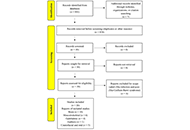 Analysis of congenital Zika syndrome clinicopathologic findings reported in the 8 years since the Brazilian outbreakOpen AccessSystematic ReviewAim: A Zika virus outbreak that began in Brazil, developed into an international public health emergency that extended from February 2015 until November 2016. Zika-infected pregnant women gave bi...Dhaara Shah ... Rana ZeinePublished: February 27, 2024 Explor Neuroprot Ther. DOI: 10.37349/ent.2024.00072
Analysis of congenital Zika syndrome clinicopathologic findings reported in the 8 years since the Brazilian outbreakOpen AccessSystematic ReviewAim: A Zika virus outbreak that began in Brazil, developed into an international public health emergency that extended from February 2015 until November 2016. Zika-infected pregnant women gave bi...Dhaara Shah ... Rana ZeinePublished: February 27, 2024 Explor Neuroprot Ther. DOI: 10.37349/ent.2024.00072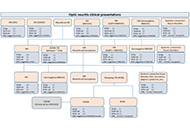 The diagnosis of myelin oligodendrocyte glycoprotein antibody-associated disease (MOGAD) in childrenOpen AccessReviewOver the last two decades, immunoglobulin G (IgG) antibodies against myelin oligodendrocyte glycoprotein (MOG), previously thought to be a biomarker of multiple sclerosis (MS), have been shown to ca...Ünsal YılmazPublished: February 27, 2024 Explor Neuroprot Ther. DOI: 10.37349/ent.2024.00069
The diagnosis of myelin oligodendrocyte glycoprotein antibody-associated disease (MOGAD) in childrenOpen AccessReviewOver the last two decades, immunoglobulin G (IgG) antibodies against myelin oligodendrocyte glycoprotein (MOG), previously thought to be a biomarker of multiple sclerosis (MS), have been shown to ca...Ünsal YılmazPublished: February 27, 2024 Explor Neuroprot Ther. DOI: 10.37349/ent.2024.00069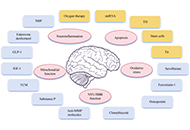 Advances in neuroprotective therapy for acute ischemic strokeOpen AccessReviewAcute ischemic stroke (AIS) is the leading cause of disability worldwide, and recanalization therapy is primary in the hyperacute phase of AIS. However, reperfusion injury and hemorrhagic transforma...Yang Yang ... Yi LiPublished: February 27, 2024 Explor Neuroprot Ther. DOI: 10.37349/ent.2024.00070
Advances in neuroprotective therapy for acute ischemic strokeOpen AccessReviewAcute ischemic stroke (AIS) is the leading cause of disability worldwide, and recanalization therapy is primary in the hyperacute phase of AIS. However, reperfusion injury and hemorrhagic transforma...Yang Yang ... Yi LiPublished: February 27, 2024 Explor Neuroprot Ther. DOI: 10.37349/ent.2024.00070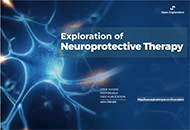 Carbon nanotubes as neuroprotective agentsOpen AccessReviewCarbon nanotubes, an emerging class of carbon nanomaterials, possess tremendous potential for application in biotechnology and biomedicine particularly in neurological disorders. Carbon nanotubes ow...Daisy L. Wilson ... Mahesh NarayanPublished: February 27, 2024 Explor Neuroprot Ther. DOI: 10.37349/ent.2024.00071
Carbon nanotubes as neuroprotective agentsOpen AccessReviewCarbon nanotubes, an emerging class of carbon nanomaterials, possess tremendous potential for application in biotechnology and biomedicine particularly in neurological disorders. Carbon nanotubes ow...Daisy L. Wilson ... Mahesh NarayanPublished: February 27, 2024 Explor Neuroprot Ther. DOI: 10.37349/ent.2024.00071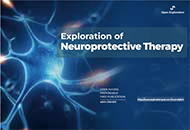 Resolving a paradox: antidepressants, neuroinflammation, and neurodegenerationOpen AccessReviewDepression is a known risk factor for dementia. Antidepressants are the most commonly used treatment for this condition, and are effective in at least half to two-thirds of cases. Extensive evidence...Ravi Philip RajkumarPublished: February 23, 2024 Explor Neuroprot Ther. DOI: 10.37349/ent.2024.00068
Resolving a paradox: antidepressants, neuroinflammation, and neurodegenerationOpen AccessReviewDepression is a known risk factor for dementia. Antidepressants are the most commonly used treatment for this condition, and are effective in at least half to two-thirds of cases. Extensive evidence...Ravi Philip RajkumarPublished: February 23, 2024 Explor Neuroprot Ther. DOI: 10.37349/ent.2024.00068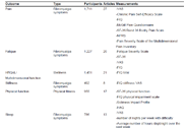 Therapeutic exercise in fibromyalgia syndrome: a narrative reviewOpen AccessReviewFibromyalgia syndrome (FMS) is characterised by the presence of distributed pain in different areas of the body accompanied by the alteration of some functions such as the activity of the neuroveget...Carlos Forner-Álvarez ... Núria Sempere-RubioPublished: February 20, 2024 Explor Neuroprot Ther. DOI: 10.37349/ent.2024.00067
Therapeutic exercise in fibromyalgia syndrome: a narrative reviewOpen AccessReviewFibromyalgia syndrome (FMS) is characterised by the presence of distributed pain in different areas of the body accompanied by the alteration of some functions such as the activity of the neuroveget...Carlos Forner-Álvarez ... Núria Sempere-RubioPublished: February 20, 2024 Explor Neuroprot Ther. DOI: 10.37349/ent.2024.00067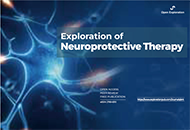 Retraction: Diffusion magnetic resonance imaging-based surrogate marker in amyotrophic lateral sclerosisOpen AccessRetractionEditorial OfficePublished: December 29, 2023 Explor Neuroprot Ther. DOI: 10.37349/ent.2023.00066
Retraction: Diffusion magnetic resonance imaging-based surrogate marker in amyotrophic lateral sclerosisOpen AccessRetractionEditorial OfficePublished: December 29, 2023 Explor Neuroprot Ther. DOI: 10.37349/ent.2023.00066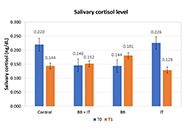 Effects of acoustic neurostimulation in healthy adults on symptoms of depression, anxiety, stress and sleep quality: a randomized clinical studyOpen AccessOriginal ArticleAim: To evaluate the application of an acoustic neurostimulation program with binaural beats and isochronic tones isolated or in association, and its effects on sleep, depression, anxiety, and st...Sandro A. Kanzler ... Rui Daniel PredigerPublished: December 26, 2023 Explor Neuroprot Ther. DOI: 10.37349/ent.2023.00064
Effects of acoustic neurostimulation in healthy adults on symptoms of depression, anxiety, stress and sleep quality: a randomized clinical studyOpen AccessOriginal ArticleAim: To evaluate the application of an acoustic neurostimulation program with binaural beats and isochronic tones isolated or in association, and its effects on sleep, depression, anxiety, and st...Sandro A. Kanzler ... Rui Daniel PredigerPublished: December 26, 2023 Explor Neuroprot Ther. DOI: 10.37349/ent.2023.00064 Breaking the amyotrophic lateral sclerosis early diagnostic barrier: the promise of general markersOpen AccessReviewAmyotrophic lateral sclerosis (ALS) is a severe neurodegenerative disease that is associated with selective and progressive loss of motor neurons. As a consequence, the symptoms of ALS are muscle cr...Yizhou Lu ... Qinming ZhouPublished: December 27, 2023 Explor Neuroprot Ther. DOI: 10.37349/ent.2023.00065
Breaking the amyotrophic lateral sclerosis early diagnostic barrier: the promise of general markersOpen AccessReviewAmyotrophic lateral sclerosis (ALS) is a severe neurodegenerative disease that is associated with selective and progressive loss of motor neurons. As a consequence, the symptoms of ALS are muscle cr...Yizhou Lu ... Qinming ZhouPublished: December 27, 2023 Explor Neuroprot Ther. DOI: 10.37349/ent.2023.00065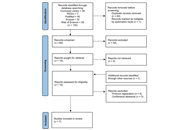 Effectiveness of dry needling on the treatment of patients with multiple sclerosis: systematic reviewOpen AccessSystematic ReviewAim: The aim of this study is to review the effectiveness of dry needling in patients with multiple sclerosis (MS). Methods: PubMed, Physiotherapy Evidence Database (PEDro), Web of Science,...Ali Mutlu ... Buket BüyükturanPublished: December 26, 2023 Explor Neuroprot Ther. DOI: 10.37349/ent.2023.00063
Effectiveness of dry needling on the treatment of patients with multiple sclerosis: systematic reviewOpen AccessSystematic ReviewAim: The aim of this study is to review the effectiveness of dry needling in patients with multiple sclerosis (MS). Methods: PubMed, Physiotherapy Evidence Database (PEDro), Web of Science,...Ali Mutlu ... Buket BüyükturanPublished: December 26, 2023 Explor Neuroprot Ther. DOI: 10.37349/ent.2023.00063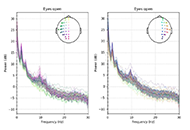 Hyperbaric oxygen therapy—a new hope for Alzheimer’s patients: a case report and literature reviewOpen AccessCase ReportThe currently available pharmacological anti-dementia treatments provide only temporary and limited benefits. Not surprisingly, patients and professionals increasingly explore non-pharmacological in...Elizabeta B. Mukaetova-Ladinska ... Qadeer ArshadPublished: December 22, 2023 Explor Neuroprot Ther. DOI: 10.37349/ent.2023.00062
Hyperbaric oxygen therapy—a new hope for Alzheimer’s patients: a case report and literature reviewOpen AccessCase ReportThe currently available pharmacological anti-dementia treatments provide only temporary and limited benefits. Not surprisingly, patients and professionals increasingly explore non-pharmacological in...Elizabeta B. Mukaetova-Ladinska ... Qadeer ArshadPublished: December 22, 2023 Explor Neuroprot Ther. DOI: 10.37349/ent.2023.00062 Minimum spanning tree analysis for epilepsy magnetoencephalography (MEG) dataOpen AccessOriginal ArticleAim: Recently, brain network research is actively conducted through the application of graph theory. However, comparison between brain networks is subject to bias issues due to topological charac...Sunhan Shin ... Jaehee KimPublished: December 13, 2023 Explor Neuroprot Ther. DOI: 10.37349/ent.2023.00061
Minimum spanning tree analysis for epilepsy magnetoencephalography (MEG) dataOpen AccessOriginal ArticleAim: Recently, brain network research is actively conducted through the application of graph theory. However, comparison between brain networks is subject to bias issues due to topological charac...Sunhan Shin ... Jaehee KimPublished: December 13, 2023 Explor Neuroprot Ther. DOI: 10.37349/ent.2023.00061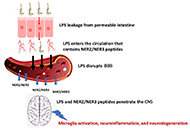 Unique cerebrospinal fluid peptides: potential amyotrophic lateral sclerosis biomarkers and etiological factorsOpen AccessOriginal ArticleAim: Amyotrophic lateral sclerosis (ALS) is a progressive disease of unknown etiology, characterized by degeneration of motoneurons and skeletal muscle strength decline that progressively evolves...Uri Wormser ... Yoram FinkelsteinPublished: December 12, 2023 Explor Neuroprot Ther. DOI: 10.37349/ent.2023.00060
Unique cerebrospinal fluid peptides: potential amyotrophic lateral sclerosis biomarkers and etiological factorsOpen AccessOriginal ArticleAim: Amyotrophic lateral sclerosis (ALS) is a progressive disease of unknown etiology, characterized by degeneration of motoneurons and skeletal muscle strength decline that progressively evolves...Uri Wormser ... Yoram FinkelsteinPublished: December 12, 2023 Explor Neuroprot Ther. DOI: 10.37349/ent.2023.00060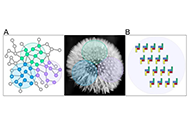 Further arguments in favor of the biological relevance of purinergic receptors: the novel emergence of a purinergic signatureOpen AccessCommentaryCinzia Volonté, Rafael FrancoPublished: November 29, 2023 Explor Neuroprot Ther. DOI: 10.37349/ent.2023.00059
Further arguments in favor of the biological relevance of purinergic receptors: the novel emergence of a purinergic signatureOpen AccessCommentaryCinzia Volonté, Rafael FrancoPublished: November 29, 2023 Explor Neuroprot Ther. DOI: 10.37349/ent.2023.00059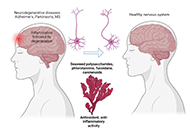 From the ocean to the brain: harnessing the power of marine algae for neuroprotection and therapeutic advancesOpen AccessReviewRecent investigations have shed light on the potential of seaweed, an abundant source of bioactive compounds, to mitigate and combat neurodegenerative diseases. In this comprehensive review, the acc...Leonel Pereira, Ana ValadoPublished: November 17, 2023 Explor Neuroprot Ther. DOI: 10.37349/ent.2023.00058
From the ocean to the brain: harnessing the power of marine algae for neuroprotection and therapeutic advancesOpen AccessReviewRecent investigations have shed light on the potential of seaweed, an abundant source of bioactive compounds, to mitigate and combat neurodegenerative diseases. In this comprehensive review, the acc...Leonel Pereira, Ana ValadoPublished: November 17, 2023 Explor Neuroprot Ther. DOI: 10.37349/ent.2023.00058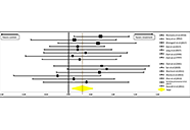 Efficacy and safety of CDP-choline, cerebrolysin, MLC601, and edaravone in recovery of patients with acute ischemic strokes: a meta-analysisOpen AccessMeta-AnalysisAim: Stroke is the second most common cause of mortality and disability worldwide with ischemic strokes being the predominant type. The advent of neuroprotectants brought hope of improved outcome...Shafiq Dexter B. Abou Zaki, Johnny K. LokinPublished: October 31, 2023 Explor Neuroprot Ther. DOI: 10.37349/ent.2023.00057
Efficacy and safety of CDP-choline, cerebrolysin, MLC601, and edaravone in recovery of patients with acute ischemic strokes: a meta-analysisOpen AccessMeta-AnalysisAim: Stroke is the second most common cause of mortality and disability worldwide with ischemic strokes being the predominant type. The advent of neuroprotectants brought hope of improved outcome...Shafiq Dexter B. Abou Zaki, Johnny K. LokinPublished: October 31, 2023 Explor Neuroprot Ther. DOI: 10.37349/ent.2023.00057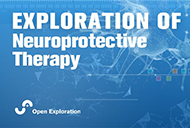 Neuroprotective astroglial response to neural damage and its relevance to affective disordersOpen AccessReviewAstrocytes not only support neuronal function with essential roles in synaptic neurotransmission, action potential propagation, metabolic support, or neuroplastic and developmental adaptations. They...José Javier Miguel-HidalgoPublished: October 31, 2023 Explor Neuroprot Ther. DOI: 10.37349/ent.2023.00054
Neuroprotective astroglial response to neural damage and its relevance to affective disordersOpen AccessReviewAstrocytes not only support neuronal function with essential roles in synaptic neurotransmission, action potential propagation, metabolic support, or neuroplastic and developmental adaptations. They...José Javier Miguel-HidalgoPublished: October 31, 2023 Explor Neuroprot Ther. DOI: 10.37349/ent.2023.00054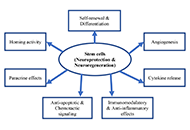 Stem cell therapy in neurological disorders: promises and concernsOpen AccessReviewSelf-neuronal regeneration is often limited or nonexistent after neuronal cell damage, making new technologies necessary for treating neurological damage. Although the brain can partially compensate...Said Hachimi-IdrissiPublished: October 31, 2023 Explor Neuroprot Ther. DOI: 10.37349/ent.2023.00055
Stem cell therapy in neurological disorders: promises and concernsOpen AccessReviewSelf-neuronal regeneration is often limited or nonexistent after neuronal cell damage, making new technologies necessary for treating neurological damage. Although the brain can partially compensate...Said Hachimi-IdrissiPublished: October 31, 2023 Explor Neuroprot Ther. DOI: 10.37349/ent.2023.00055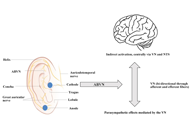 Exploration of transcutaneous vagus nerve stimulation as a treatment option for adjuvant cancer and heart failure therapyOpen AccessReviewVagus nerve stimulation (VNS) has gained prominence in the treatment of various clinical disorders such as migraine, depression, and tinnitus. Based on increased scientific knowledge of the VNS and ...Niklas Frank ... Carola Y. FörsterPublished: October 31, 2023 Explor Neuroprot Ther. DOI: 10.37349/ent.2023.00056
Exploration of transcutaneous vagus nerve stimulation as a treatment option for adjuvant cancer and heart failure therapyOpen AccessReviewVagus nerve stimulation (VNS) has gained prominence in the treatment of various clinical disorders such as migraine, depression, and tinnitus. Based on increased scientific knowledge of the VNS and ...Niklas Frank ... Carola Y. FörsterPublished: October 31, 2023 Explor Neuroprot Ther. DOI: 10.37349/ent.2023.00056 Aldh1a1 and additional markers of dopamine cell heterogeneity in substantia nigra and ventral tegmental area identified as preserved in two transgenic α-synuclein mouse models of neurodegenerative diseaseOpen AccessOriginal ArticleAim: Parkinson’s disease (PD) is characterized by degeneration of midbrain dopamine neurons and synucleinopathy [aggregated alpha-synuclein protein (αSyn)]. The correlation between αSyn patho...Bianca Vlcek ... Åsa Wallén-MackenziePublished: October 30, 2023 Explor Neuroprot Ther. DOI: 10.37349/ent.2023.00053
Aldh1a1 and additional markers of dopamine cell heterogeneity in substantia nigra and ventral tegmental area identified as preserved in two transgenic α-synuclein mouse models of neurodegenerative diseaseOpen AccessOriginal ArticleAim: Parkinson’s disease (PD) is characterized by degeneration of midbrain dopamine neurons and synucleinopathy [aggregated alpha-synuclein protein (αSyn)]. The correlation between αSyn patho...Bianca Vlcek ... Åsa Wallén-MackenziePublished: October 30, 2023 Explor Neuroprot Ther. DOI: 10.37349/ent.2023.00053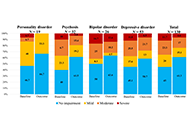 Cognitive recovery in psychiatric disorders: transdiagnostic interdisciplinary intervention in a high intensity partial psychiatric in-patient unitOpen AccessOriginal ArticleAim: The present study aims to analyze the impact on cognitive recovery of an interdisciplinary treatment for acute and severe psychiatric patients. Methods: The present research is a natur...Ana Isabel De Santiago-Díaz ... Elsa Gómez-RuizPublished: October 26, 2023 Explor Neuroprot Ther. DOI: 10.37349/ent.2023.00051
Cognitive recovery in psychiatric disorders: transdiagnostic interdisciplinary intervention in a high intensity partial psychiatric in-patient unitOpen AccessOriginal ArticleAim: The present study aims to analyze the impact on cognitive recovery of an interdisciplinary treatment for acute and severe psychiatric patients. Methods: The present research is a natur...Ana Isabel De Santiago-Díaz ... Elsa Gómez-RuizPublished: October 26, 2023 Explor Neuroprot Ther. DOI: 10.37349/ent.2023.00051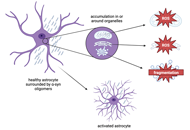 The effects of post-translational modifications on alpha-synuclein aggregation and immune cell activation in Parkinson’s diseaseOpen AccessReviewPost-translational modifications (PTMs) of alpha-synuclein (α-syn) can alter protein aggregation propensity to affect α-syn oligomer and fibril formation. The inflammatory response in Parkinson’...Zaina Khan, Yoo Jin JungPublished: October 26, 2023 Explor Neuroprot Ther. DOI: 10.37349/ent.2023.00052
The effects of post-translational modifications on alpha-synuclein aggregation and immune cell activation in Parkinson’s diseaseOpen AccessReviewPost-translational modifications (PTMs) of alpha-synuclein (α-syn) can alter protein aggregation propensity to affect α-syn oligomer and fibril formation. The inflammatory response in Parkinson’...Zaina Khan, Yoo Jin JungPublished: October 26, 2023 Explor Neuroprot Ther. DOI: 10.37349/ent.2023.00052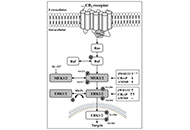 Cannabinoid CB2 receptor ligands disrupt the sequential regulation of p-MEK1/2 to p-ERK1/2 in mouse brain cortexOpen AccessOriginal ArticleAim The sequential phosphorylation of mitogen-activated protein (MAP) kinases MEK-ERK is the most relevant cellular signaling pathway. This study quantified the parallel in vivo regulation of bra...Glòria Salort ... Jesús A. García-SevillaPublished: October 24, 2023 Explor Neuroprot Ther. DOI: 10.37349/ent.2023.00050
Cannabinoid CB2 receptor ligands disrupt the sequential regulation of p-MEK1/2 to p-ERK1/2 in mouse brain cortexOpen AccessOriginal ArticleAim The sequential phosphorylation of mitogen-activated protein (MAP) kinases MEK-ERK is the most relevant cellular signaling pathway. This study quantified the parallel in vivo regulation of bra...Glòria Salort ... Jesús A. García-SevillaPublished: October 24, 2023 Explor Neuroprot Ther. DOI: 10.37349/ent.2023.00050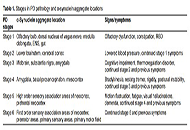 Rehabilitation for non-motor symptoms for patients with Parkinson’s disease from an α-synuclein perspective: a narrative reviewOpen AccessReviewParkinson’s disease (PD) is a common neurodegenerative disorder affecting aged population around the world. PD is characterized by neuronal Lewy bodies present in the substantia nigra of the midbr...Zhaoyang Liu ... Wen LiuPublished: August 27, 2023 Explor Neuroprot Ther. DOI: 10.37349/ent.2023.00049
Rehabilitation for non-motor symptoms for patients with Parkinson’s disease from an α-synuclein perspective: a narrative reviewOpen AccessReviewParkinson’s disease (PD) is a common neurodegenerative disorder affecting aged population around the world. PD is characterized by neuronal Lewy bodies present in the substantia nigra of the midbr...Zhaoyang Liu ... Wen LiuPublished: August 27, 2023 Explor Neuroprot Ther. DOI: 10.37349/ent.2023.00049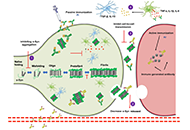 Targeting α-synuclein aggregation with immunotherapy: a promising therapeutic approach for Parkinson’s diseaseOpen AccessReviewParkinson’s disease (PD) is a prevalent neurodegenerative disease (NDD) affecting millions of individuals. The pathogenesis of PD centers around α-synuclein (α-Syn), a pivotal protein whose aggr...Gabriela Henriquez, Mahesh NarayanPublished: August 25, 2023 Explor Neuroprot Ther. DOI: 10.37349/ent.2023.00048
Targeting α-synuclein aggregation with immunotherapy: a promising therapeutic approach for Parkinson’s diseaseOpen AccessReviewParkinson’s disease (PD) is a prevalent neurodegenerative disease (NDD) affecting millions of individuals. The pathogenesis of PD centers around α-synuclein (α-Syn), a pivotal protein whose aggr...Gabriela Henriquez, Mahesh NarayanPublished: August 25, 2023 Explor Neuroprot Ther. DOI: 10.37349/ent.2023.00048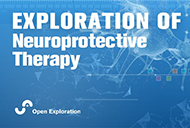 Retracted: Diffusion magnetic resonance imaging-based surrogate marker in amyotrophic lateral sclerosisOpen AccessReviewAmyotrophic lateral sclerosis (ALS) is the most prevalent type of motor neuron disease (MND) and is diagnosed with a delay from the first appearance of symptoms. Surrogate markers that may be used t...Yuya SaitoPublished: August 25, 2023 Explor Neuroprot Ther. DOI: 10.37349/ent.2023.00047
Retracted: Diffusion magnetic resonance imaging-based surrogate marker in amyotrophic lateral sclerosisOpen AccessReviewAmyotrophic lateral sclerosis (ALS) is the most prevalent type of motor neuron disease (MND) and is diagnosed with a delay from the first appearance of symptoms. Surrogate markers that may be used t...Yuya SaitoPublished: August 25, 2023 Explor Neuroprot Ther. DOI: 10.37349/ent.2023.00047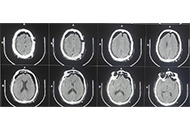 Tension pneumocephalus as a complication of surgical evacuation of chronic subdural hematoma: case report and literature reviewOpen AccessCase ReportThe management of symptomatic chronic subdural hematoma (CSDH) is surgical evacuation and prognosis in most cases is good. Tension pneumocephalus is the presence of air under pressure in the intracr...Mohammed A. Azab ... Brandon Lucke-WoldPublished: August 23, 2023 Explor Neuroprot Ther. DOI: 10.37349/ent.2023.00046
Tension pneumocephalus as a complication of surgical evacuation of chronic subdural hematoma: case report and literature reviewOpen AccessCase ReportThe management of symptomatic chronic subdural hematoma (CSDH) is surgical evacuation and prognosis in most cases is good. Tension pneumocephalus is the presence of air under pressure in the intracr...Mohammed A. Azab ... Brandon Lucke-WoldPublished: August 23, 2023 Explor Neuroprot Ther. DOI: 10.37349/ent.2023.00046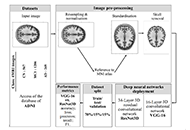 Alzheimer’s disease detection from magnetic resonance imaging: a deep learning perspectiveOpen AccessOriginal ArticleAim: Up to date many successful attempts to identify various types of lesions with machine learning (ML) were made, however, the recognition of Alzheimer’s disease (AD) from brain images and inter...Karolina Armonaite ... Luigi LauraPublished: June 30, 2023 Explor Neuroprot Ther. DOI: 10.37349/ent.2023.00043
Alzheimer’s disease detection from magnetic resonance imaging: a deep learning perspectiveOpen AccessOriginal ArticleAim: Up to date many successful attempts to identify various types of lesions with machine learning (ML) were made, however, the recognition of Alzheimer’s disease (AD) from brain images and inter...Karolina Armonaite ... Luigi LauraPublished: June 30, 2023 Explor Neuroprot Ther. DOI: 10.37349/ent.2023.00043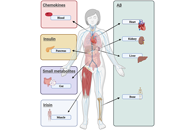 Looking at the periphery—new hypothesis to look for new targets for Alzheimer’s disease therapyOpen AccessReviewCurrently, the predominant targets for the treatment of Alzheimer’s disease (AD) are the main components of the two pathological structures: senile plaques (composed of amyloid beta peptide aggreg...Jesús Avila ... Félix HernándezPublished: June 30, 2023 Explor Neuroprot Ther. DOI: 10.37349/ent.2023.00044
Looking at the periphery—new hypothesis to look for new targets for Alzheimer’s disease therapyOpen AccessReviewCurrently, the predominant targets for the treatment of Alzheimer’s disease (AD) are the main components of the two pathological structures: senile plaques (composed of amyloid beta peptide aggreg...Jesús Avila ... Félix HernándezPublished: June 30, 2023 Explor Neuroprot Ther. DOI: 10.37349/ent.2023.00044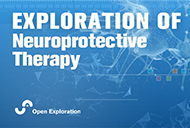 Muscle fatigue and exercise-related biomarkers in amyotrophic lateral sclerosisOpen AccessReviewAmyotrophic lateral sclerosis (ALS) is a devastating neurodegenerative disorder affecting motor neurons. The complex etiopathogenetic mechanism of ALS can lead to extensive alterations, including co...Francesca Bianchi ... Gabriele SicilianoPublished: June 30, 2023 Explor Neuroprot Ther. DOI: 10.37349/ent.2023.00045
Muscle fatigue and exercise-related biomarkers in amyotrophic lateral sclerosisOpen AccessReviewAmyotrophic lateral sclerosis (ALS) is a devastating neurodegenerative disorder affecting motor neurons. The complex etiopathogenetic mechanism of ALS can lead to extensive alterations, including co...Francesca Bianchi ... Gabriele SicilianoPublished: June 30, 2023 Explor Neuroprot Ther. DOI: 10.37349/ent.2023.00045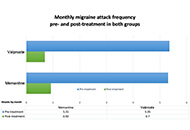 Efficacy of memantine compared with sodium valproate as prophylactic treatment for migraine: a controlled randomized pilot studyOpen AccessOriginal ArticleAim: To compare the efficacy of memantine with that of valproate as a prophylactic treatment for episodic migraine within three months. The efficacy, safety, and response rate were evaluated. ...Damaris Vazquez-Guevara ... Ildefonso Rodriguez-LeyvaPublished: April 28, 2023 Explor Neuroprot Ther. DOI: 10.37349/ent.2023.00042
Efficacy of memantine compared with sodium valproate as prophylactic treatment for migraine: a controlled randomized pilot studyOpen AccessOriginal ArticleAim: To compare the efficacy of memantine with that of valproate as a prophylactic treatment for episodic migraine within three months. The efficacy, safety, and response rate were evaluated. ...Damaris Vazquez-Guevara ... Ildefonso Rodriguez-LeyvaPublished: April 28, 2023 Explor Neuroprot Ther. DOI: 10.37349/ent.2023.00042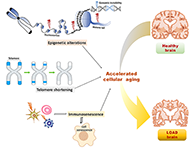 Epigenetic and non-epigenetic mechanisms in the accelerated cellular aging in late-onset Alzheimer’s diseaseOpen AccessReviewLate-onset Alzheimer's disease (LOAD) is the most common form of Alzheimer's disease (AD) and its risk increases exponentially with aging. The incidence of LOAD is reported to ...Kajal Rawat, Prathiba GarlapallyPublished: April 28, 2023 Explor Neuroprot Ther. DOI: 10.37349/ent.2023.00040
Epigenetic and non-epigenetic mechanisms in the accelerated cellular aging in late-onset Alzheimer’s diseaseOpen AccessReviewLate-onset Alzheimer's disease (LOAD) is the most common form of Alzheimer's disease (AD) and its risk increases exponentially with aging. The incidence of LOAD is reported to ...Kajal Rawat, Prathiba GarlapallyPublished: April 28, 2023 Explor Neuroprot Ther. DOI: 10.37349/ent.2023.00040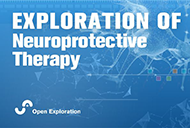 Reversible cerebral vasoconstriction syndrome: a clinical and therapeutic challengeOpen AccessReviewReversible cerebral vasoconstriction syndrome (RCVS) is characterized by thunderclap headache and intracranial segmental vasoconstriction with or without signs of neurological deficit with a variabl...Andrés Ricaurte-Fajardo ... Nathalia Melo GonzalezPublished: April 28, 2023 Explor Neuroprot Ther. DOI: 10.37349/ent.2023.00041
Reversible cerebral vasoconstriction syndrome: a clinical and therapeutic challengeOpen AccessReviewReversible cerebral vasoconstriction syndrome (RCVS) is characterized by thunderclap headache and intracranial segmental vasoconstriction with or without signs of neurological deficit with a variabl...Andrés Ricaurte-Fajardo ... Nathalia Melo GonzalezPublished: April 28, 2023 Explor Neuroprot Ther. DOI: 10.37349/ent.2023.00041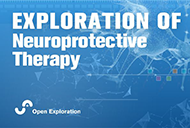 Innate and adaptive glial cell responses in Alzheimer’s diseaseOpen AccessReviewAlzheimer’s disease (AD), which affects around twenty-seven million people globally, is an aging-related neurodegenerative condition characterized by the extracellular deposition of misfolded amyl...Ankita Singh, Tiratha Raj SinghPublished: April 03, 2023 Explor Neuroprot Ther. DOI: 10.37349/ent.2023.00039
Innate and adaptive glial cell responses in Alzheimer’s diseaseOpen AccessReviewAlzheimer’s disease (AD), which affects around twenty-seven million people globally, is an aging-related neurodegenerative condition characterized by the extracellular deposition of misfolded amyl...Ankita Singh, Tiratha Raj SinghPublished: April 03, 2023 Explor Neuroprot Ther. DOI: 10.37349/ent.2023.00039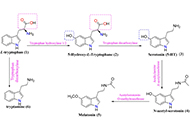 The role of microbiota-gut-brain axis in neurodegenerative diseases: biochemical and therapeutic aspectsOpen AccessReviewThe enteric nervous system (ENS) is considered by some authors as the second human brain, given its fundamental role in the regulation process of the central nervous system (CNS). Recent data from s...Januário T. Ernesto ... Cláudio Viegas Jr.Published: March 29, 2023 Explor Neuroprot Ther. DOI: 10.37349/ent.2023.00038
The role of microbiota-gut-brain axis in neurodegenerative diseases: biochemical and therapeutic aspectsOpen AccessReviewThe enteric nervous system (ENS) is considered by some authors as the second human brain, given its fundamental role in the regulation process of the central nervous system (CNS). Recent data from s...Januário T. Ernesto ... Cláudio Viegas Jr.Published: March 29, 2023 Explor Neuroprot Ther. DOI: 10.37349/ent.2023.00038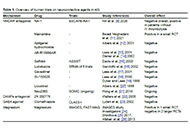 Neuroprotective agents in acute ischemic strokeOpen AccessReviewAcute ischemic stroke (AIS) is the leading cause of disability and one of the top causes of mortality worldwide. The current standard of care is reperfusion therapy including intravenous thrombolysi...Grace YY Chia ... Benjamin YQ TanPublished: February 28, 2023 Explor Neuroprot Ther. DOI: 10.37349/ent.2023.00037
Neuroprotective agents in acute ischemic strokeOpen AccessReviewAcute ischemic stroke (AIS) is the leading cause of disability and one of the top causes of mortality worldwide. The current standard of care is reperfusion therapy including intravenous thrombolysi...Grace YY Chia ... Benjamin YQ TanPublished: February 28, 2023 Explor Neuroprot Ther. DOI: 10.37349/ent.2023.00037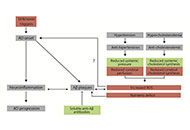 Can chronic therapeutic drug use by the elderly affect Alzheimer’s disease risk and rate of progression?Open AccessReviewThere is no approved drug capable of halting the progression of the most prevalent neurodegenerative disorders, namely Alzheimer's disease (AD) and Parkinson's disease (PD). ...Rafael Franco, Joan Serrano-MarínPublished: February 27, 2023 Explor Neuroprot Ther DOI: 10.37349/ent.2023.00035
Can chronic therapeutic drug use by the elderly affect Alzheimer’s disease risk and rate of progression?Open AccessReviewThere is no approved drug capable of halting the progression of the most prevalent neurodegenerative disorders, namely Alzheimer's disease (AD) and Parkinson's disease (PD). ...Rafael Franco, Joan Serrano-MarínPublished: February 27, 2023 Explor Neuroprot Ther DOI: 10.37349/ent.2023.00035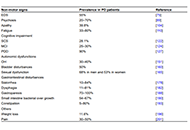 Pathophysiology of non-motor signs in Parkinson’s disease: some recent updating with brief presentationOpen AccessReviewParkinson’s disease (PD) is a progressive neurodegenerative disorder affecting 1% of the population above sixty years. It is caused by an interaction between genetic and envi...Khaled Radad ... Wolf-Dieter RauschPublished: February 27, 2023 Explor Neuroprot Ther. DOI: 10.37349/ent.2023.00036
Pathophysiology of non-motor signs in Parkinson’s disease: some recent updating with brief presentationOpen AccessReviewParkinson’s disease (PD) is a progressive neurodegenerative disorder affecting 1% of the population above sixty years. It is caused by an interaction between genetic and envi...Khaled Radad ... Wolf-Dieter RauschPublished: February 27, 2023 Explor Neuroprot Ther. DOI: 10.37349/ent.2023.00036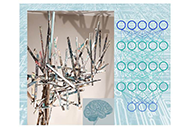 Machine learning as a new tool in neurological disease prevention, diagnosis, and treatmentOpen AccessPerspectiveMore than 600 different neurological diseases affect the human population. Some of these are genetic and can emerge even before birth, and some are caused by defects, infections, trauma, degeneratio...Cinzia VolontéPublished: February 21, 2023 Explor Neuroprot Ther. DOI: 10.37349/ent.2023.00034
Machine learning as a new tool in neurological disease prevention, diagnosis, and treatmentOpen AccessPerspectiveMore than 600 different neurological diseases affect the human population. Some of these are genetic and can emerge even before birth, and some are caused by defects, infections, trauma, degeneratio...Cinzia VolontéPublished: February 21, 2023 Explor Neuroprot Ther. DOI: 10.37349/ent.2023.00034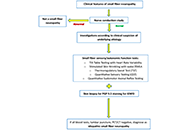 Biomarkers in small fiber neuropathyOpen AccessReviewSmall fiber neuropathy (SFN) is a relatively common, but largely understudied neurological syndrome which has affected the lives of many globally. The common symptoms of SFN include pain, dysesthesi...Amanda C. Y. Chan ... Joy VijayanPublished: December 30, 2022 Explor Neuroprot Ther. DOI: 10.37349/ent.2022.00033
Biomarkers in small fiber neuropathyOpen AccessReviewSmall fiber neuropathy (SFN) is a relatively common, but largely understudied neurological syndrome which has affected the lives of many globally. The common symptoms of SFN include pain, dysesthesi...Amanda C. Y. Chan ... Joy VijayanPublished: December 30, 2022 Explor Neuroprot Ther. DOI: 10.37349/ent.2022.00033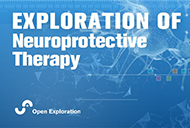 Catatonia in two women with Parkinson’s disease treated with electroconvulsive therapyOpen AccessCase ReportCatatonia is a neuropsychiatric syndrome characterized by a broad range of motor, behavioral and cognitive abnormalities. Catatonia and Parkinson’s disease (PD) may show partially overlapping symptomatology. For this reason, catatonia could be misdiagnosed and overlooked in patients with severe PD, leading to a delay in proper treatment with benzodiazepines or electroconvulsive therapy (ECT). ...Camilla Elefante ... Giulio PerugiPublished: December 28, 2022 Explor Neuroprot Ther. DOI: 10.37349/ent.2022.00032
Catatonia in two women with Parkinson’s disease treated with electroconvulsive therapyOpen AccessCase ReportCatatonia is a neuropsychiatric syndrome characterized by a broad range of motor, behavioral and cognitive abnormalities. Catatonia and Parkinson’s disease (PD) may show partially overlapping symptomatology. For this reason, catatonia could be misdiagnosed and overlooked in patients with severe PD, leading to a delay in proper treatment with benzodiazepines or electroconvulsive therapy (ECT). ...Camilla Elefante ... Giulio PerugiPublished: December 28, 2022 Explor Neuroprot Ther. DOI: 10.37349/ent.2022.00032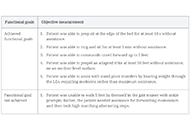 Dry needling with electrical stimulation for the treatment of a pediatric patient with spastic cerebral palsy: a case reportOpen AccessCase ReportThe patient was a 6-year-old child with spastic quadriplegic cerebral palsy (CP) categorized with the gross motor function classification system (GMFCS) as a level IV and a Modified Modified Ashwort...Temrah Okonski, Jan DommerholtPublished: November 16, 2022 Explor Neuroprot Ther. DOI: 10.37349/ent.2022.00031
Dry needling with electrical stimulation for the treatment of a pediatric patient with spastic cerebral palsy: a case reportOpen AccessCase ReportThe patient was a 6-year-old child with spastic quadriplegic cerebral palsy (CP) categorized with the gross motor function classification system (GMFCS) as a level IV and a Modified Modified Ashwort...Temrah Okonski, Jan DommerholtPublished: November 16, 2022 Explor Neuroprot Ther. DOI: 10.37349/ent.2022.00031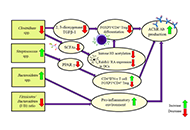 Overview of biomarkers in myasthenia gravisOpen AccessReviewMyasthenia gravis (MG) is a rare auto-immune neuromuscular junction (NMJ) disorder which is caused by formation of autoantibodies and destruction of NMJ components. The MG diagnosis is based on the ...Fatemeh Afrashteh, Rayan RajabiPublished: October 31, 2022 Explor Neuroprot Ther. DOI: 10.37349/ent.2022.00029
Overview of biomarkers in myasthenia gravisOpen AccessReviewMyasthenia gravis (MG) is a rare auto-immune neuromuscular junction (NMJ) disorder which is caused by formation of autoantibodies and destruction of NMJ components. The MG diagnosis is based on the ...Fatemeh Afrashteh, Rayan RajabiPublished: October 31, 2022 Explor Neuroprot Ther. DOI: 10.37349/ent.2022.00029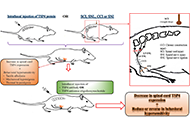 Blockage of thrombospondin 4 secreted by spinal astrocytes may be a promising therapeutic target in the treatment of neuropathic painOpen AccessReviewNeuropathic pain (NP), which is difficult to treat, remains a heavy burden for both individuals and society. The efficacy of current treatments is insufficient. The pathophysiology of NP is still no...Neslihan Düzenli ... Aytül ÖnalPublished: October 31, 2022 Explor Neuroprot Ther. DOI: 10.37349/ent.2022.00030
Blockage of thrombospondin 4 secreted by spinal astrocytes may be a promising therapeutic target in the treatment of neuropathic painOpen AccessReviewNeuropathic pain (NP), which is difficult to treat, remains a heavy burden for both individuals and society. The efficacy of current treatments is insufficient. The pathophysiology of NP is still no...Neslihan Düzenli ... Aytül ÖnalPublished: October 31, 2022 Explor Neuroprot Ther. DOI: 10.37349/ent.2022.00030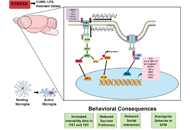 Toll-like receptor 4 in the interface between neuroimmune response and behavioral alterations caused by stressOpen AccessReviewDifferent stressors can elicit neuroinflammatory responses modulated by innate immunity receptors, such as the family of Toll-like receptors (TLRs). The TLR4, a pattern recognition receptor (PRR), i...Fábio José Coelho Souza-Junior ... Sabrina Francesca LisboaPublished: October 31, 2022 Explor Neuroprot Ther. DOI: 10.37349/ent.2022.00028
Toll-like receptor 4 in the interface between neuroimmune response and behavioral alterations caused by stressOpen AccessReviewDifferent stressors can elicit neuroinflammatory responses modulated by innate immunity receptors, such as the family of Toll-like receptors (TLRs). The TLR4, a pattern recognition receptor (PRR), i...Fábio José Coelho Souza-Junior ... Sabrina Francesca LisboaPublished: October 31, 2022 Explor Neuroprot Ther. DOI: 10.37349/ent.2022.00028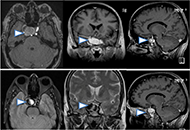 Paraclinoid unruptured giant aneurysm with therapeutic successOpen AccessCase ReportThe global prevalence of intracranial aneurysms (IA) ranges from 5–10%, with a demographic variation. Large and giant aneurysms typically involve cavernous and paraclinoid se...Gonçalo JanuárioPublished: August 30, 2022 Explor Neuroprot Ther. DOI: 10.37349/ent.2022.00027
Paraclinoid unruptured giant aneurysm with therapeutic successOpen AccessCase ReportThe global prevalence of intracranial aneurysms (IA) ranges from 5–10%, with a demographic variation. Large and giant aneurysms typically involve cavernous and paraclinoid se...Gonçalo JanuárioPublished: August 30, 2022 Explor Neuroprot Ther. DOI: 10.37349/ent.2022.00027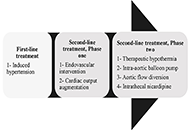 Delayed cerebral ischemia and therapeutic approaches after subarachnoid hemorrhageOpen AccessReviewDelayed cerebral ischemia after subarachnoid hemorrhage is one of the most important causes of mortality and poor functional outcome in patients. Initially, the etiology and treatment of delayed cer...Fettah Eren ... Sueda Ecem YilmazPublished: August 22, 2022 Explor Neuroprot Ther. DOI: 10.37349/ent.2022.00026
Delayed cerebral ischemia and therapeutic approaches after subarachnoid hemorrhageOpen AccessReviewDelayed cerebral ischemia after subarachnoid hemorrhage is one of the most important causes of mortality and poor functional outcome in patients. Initially, the etiology and treatment of delayed cer...Fettah Eren ... Sueda Ecem YilmazPublished: August 22, 2022 Explor Neuroprot Ther. DOI: 10.37349/ent.2022.00026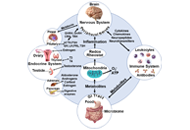 Autism: genetics, environmental stressors, maternal immune activation, and the male bias in autismOpen AccessReviewAutism spectrum disorder (ASD) is a class of neurodevelopmental disorders (NDD) characterized by deficits in three domains: impairments in social interactions, language, and communication, and increased stereotyped restrictive/repetitive behaviors and interests. The exact etiology of ASD remains unknown. ...Sarah Otaru, David A. LawrencePublished: August 11, 2022 Explor Neuroprot Ther. DOI: 10.37349/ent.2022.00025
Autism: genetics, environmental stressors, maternal immune activation, and the male bias in autismOpen AccessReviewAutism spectrum disorder (ASD) is a class of neurodevelopmental disorders (NDD) characterized by deficits in three domains: impairments in social interactions, language, and communication, and increased stereotyped restrictive/repetitive behaviors and interests. The exact etiology of ASD remains unknown. ...Sarah Otaru, David A. LawrencePublished: August 11, 2022 Explor Neuroprot Ther. DOI: 10.37349/ent.2022.00025 Economics of dry needling and botulinum toxin type A for treatment of post-stroke spasticity: a reviewOpen AccessReviewStroke is one of the most common causes of disability and exerts a high burden of direct and indirect costs. Stroke may cause spasticity, which limits patients’ abilities and affects the...Daniel Fernández ... Eva María Gómez-TrullénPublished: June 30, 2022 Explor Neuroprot Ther. DOI: 10.37349/ent.2022.00024
Economics of dry needling and botulinum toxin type A for treatment of post-stroke spasticity: a reviewOpen AccessReviewStroke is one of the most common causes of disability and exerts a high burden of direct and indirect costs. Stroke may cause spasticity, which limits patients’ abilities and affects the...Daniel Fernández ... Eva María Gómez-TrullénPublished: June 30, 2022 Explor Neuroprot Ther. DOI: 10.37349/ent.2022.00024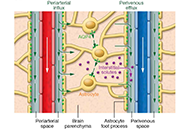 Can meditation-based approaches improve the cleansing power of the glymphatic system?Open AccessPerspectiveThe glymphatic system, first described in 2012, is a brain-wide perivascular network that plays an important role in promoting interstitial metabolic waste removal from the brain. Glymphatic pathway...Peter Wostyn, Piet GoddaerPublished: June 20, 2022 Explor Neuroprot Ther. DOI: 10.37349/ent.2022.00022
Can meditation-based approaches improve the cleansing power of the glymphatic system?Open AccessPerspectiveThe glymphatic system, first described in 2012, is a brain-wide perivascular network that plays an important role in promoting interstitial metabolic waste removal from the brain. Glymphatic pathway...Peter Wostyn, Piet GoddaerPublished: June 20, 2022 Explor Neuroprot Ther. DOI: 10.37349/ent.2022.00022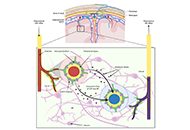 The glymphatic system and subarachnoid hemorrhage: disruption and recoveryOpen AccessReviewThe glymphatic system, or glial-lymphatic system, is a waste clearance system composed of perivascular channels formed by astrocytes that mediate the clearance of proteins and metabolites from the b...Stephan Quintin ... Brandon Lucke-WoldPublished: June 21, 2022 Explor Neuroprot Ther. DOI: 10.37349/ent.2022.00023
The glymphatic system and subarachnoid hemorrhage: disruption and recoveryOpen AccessReviewThe glymphatic system, or glial-lymphatic system, is a waste clearance system composed of perivascular channels formed by astrocytes that mediate the clearance of proteins and metabolites from the b...Stephan Quintin ... Brandon Lucke-WoldPublished: June 21, 2022 Explor Neuroprot Ther. DOI: 10.37349/ent.2022.00023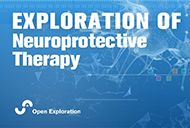 Combined effects of dry needling and exercises therapy on muscle spasticity and motor function in chronic stroke: a pretest-posttest pilot studyOpen AccessOriginal ArticleAim: Spasticity is one of the most common symptoms in post-stroke patients. Dry needling (DN) is a relatively new method for the management of muscle spasticity. A multimodal treatment may be mor...Seyedeh Saeideh Babazadeh-Zavieh ... Korosh MansooriPublished: June 20, 2022 Explor Neuroprot Ther. DOI: 10.37349/ent.2022.00021
Combined effects of dry needling and exercises therapy on muscle spasticity and motor function in chronic stroke: a pretest-posttest pilot studyOpen AccessOriginal ArticleAim: Spasticity is one of the most common symptoms in post-stroke patients. Dry needling (DN) is a relatively new method for the management of muscle spasticity. A multimodal treatment may be mor...Seyedeh Saeideh Babazadeh-Zavieh ... Korosh MansooriPublished: June 20, 2022 Explor Neuroprot Ther. DOI: 10.37349/ent.2022.00021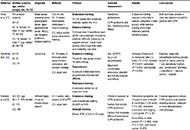 The role of physical activity against chemotherapy-induced peripheral neuropathy: a narrative reviewOpen AccessReviewSeveral studies investigated the side effect of adjuvant cancer treatments, and different types of preventive techniques or treatments have been assessed. Chemotherapy-induced peripheral neuropathy ...Daniele Diotti ... Lucio MarinelliPublished: April 28, 2022 Explor Neuroprot Ther. DOI: 10.37349/ent.2022.00020
The role of physical activity against chemotherapy-induced peripheral neuropathy: a narrative reviewOpen AccessReviewSeveral studies investigated the side effect of adjuvant cancer treatments, and different types of preventive techniques or treatments have been assessed. Chemotherapy-induced peripheral neuropathy ...Daniele Diotti ... Lucio MarinelliPublished: April 28, 2022 Explor Neuroprot Ther. DOI: 10.37349/ent.2022.00020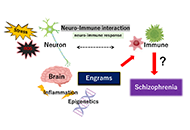 Gut microbiota could modulate the effects of neuro-immune responses and memory traces via the gut-brain-immune axis in schizophreniaOpen AccessPerspectiveAltered immunity may have destructive consequences for the integrated central nervous system. This immune response often affects progressive neurodegenerative diseases such as Parkinson’s disease and/or psychiatric disorders such as schizophrenia. In particular, schizophrenia pathogenesis may be mediated by multiple neuro-immune interaction pathways. Gut microbiota might affect the brain and/or immune function. Significant machineries of immunity are commonly affected by the commensal gut microbiota. Therefore, schizophrenia may be connected with the gut-immune system. In addition, the brain and immune systems cooperate on multiple levels. The brain could save several pieces of information about specific inflammation in a body. This immunological memory named “engrams”, also called memory traces, could restore the initial disease state, which may help to explain key features of schizophrenia. Based on this concept, therapeutic strategies for schizophrenia could be the modification of the gut microbiota. Probiotics and/or fecal microbiota transplantation are now emerging as the most promising treatments for the modification. More consideration of the roles of gut microbiota will conduct the further development of immune-based therapeutics for the prevention and/or treatments of psychiatric disorders....Haruka Sawamura ... Satoru MatsudaPublished: April 24, 2022 Explor Neuroprot Ther. DOI: 10.37349/ent.2022.00019
Gut microbiota could modulate the effects of neuro-immune responses and memory traces via the gut-brain-immune axis in schizophreniaOpen AccessPerspectiveAltered immunity may have destructive consequences for the integrated central nervous system. This immune response often affects progressive neurodegenerative diseases such as Parkinson’s disease and/or psychiatric disorders such as schizophrenia. In particular, schizophrenia pathogenesis may be mediated by multiple neuro-immune interaction pathways. Gut microbiota might affect the brain and/or immune function. Significant machineries of immunity are commonly affected by the commensal gut microbiota. Therefore, schizophrenia may be connected with the gut-immune system. In addition, the brain and immune systems cooperate on multiple levels. The brain could save several pieces of information about specific inflammation in a body. This immunological memory named “engrams”, also called memory traces, could restore the initial disease state, which may help to explain key features of schizophrenia. Based on this concept, therapeutic strategies for schizophrenia could be the modification of the gut microbiota. Probiotics and/or fecal microbiota transplantation are now emerging as the most promising treatments for the modification. More consideration of the roles of gut microbiota will conduct the further development of immune-based therapeutics for the prevention and/or treatments of psychiatric disorders....Haruka Sawamura ... Satoru MatsudaPublished: April 24, 2022 Explor Neuroprot Ther. DOI: 10.37349/ent.2022.00019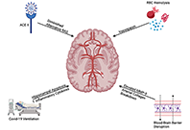 Subarachnoid hemorrhage: management considerations for COVID-19Open AccessReviewSubarachnoid hemorrhage (SAH) has deleterious outcomes for patients, and during the hospital stay, patients are susceptible to vasospasm and delayed cerebral ischemia. Coronavirus disease 2019 (COVI...Eric J. Panther, Brandon Lucke-WoldPublished: March 02, 2022 Explor Neuroprot Ther. DOI: 10.37349/ent.2022.00018
Subarachnoid hemorrhage: management considerations for COVID-19Open AccessReviewSubarachnoid hemorrhage (SAH) has deleterious outcomes for patients, and during the hospital stay, patients are susceptible to vasospasm and delayed cerebral ischemia. Coronavirus disease 2019 (COVI...Eric J. Panther, Brandon Lucke-WoldPublished: March 02, 2022 Explor Neuroprot Ther. DOI: 10.37349/ent.2022.00018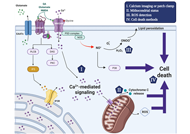 Various facets of excitotoxicityOpen AccessSystematic ReviewAim: Excitotoxicity results from unusually increased activation of excitatory amino acid receptors leading to neuronal death. Since glutamate is the main excitatory neurotransmitter in the centra...Talita Glaser ... Henning UlrichPublished: February 23, 2022 Explor Neuroprot Ther. DOI: 10.37349/ent.2022.00017
Various facets of excitotoxicityOpen AccessSystematic ReviewAim: Excitotoxicity results from unusually increased activation of excitatory amino acid receptors leading to neuronal death. Since glutamate is the main excitatory neurotransmitter in the centra...Talita Glaser ... Henning UlrichPublished: February 23, 2022 Explor Neuroprot Ther. DOI: 10.37349/ent.2022.00017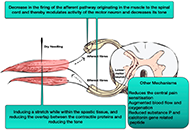 Dry needling in strokeOpen AccessReviewStroke causes acute neurological deficit which is an important cause of morbidity and mortality. Neurorehabilitation is an important dimension in the management of post-stroke deficits. Spasticity, ...Nirmal Surya, Guhan RamamurthyPublished: February 17, 2022 Explor Neuroprot Ther. DOI: 10.37349/ent.2022.00016
Dry needling in strokeOpen AccessReviewStroke causes acute neurological deficit which is an important cause of morbidity and mortality. Neurorehabilitation is an important dimension in the management of post-stroke deficits. Spasticity, ...Nirmal Surya, Guhan RamamurthyPublished: February 17, 2022 Explor Neuroprot Ther. DOI: 10.37349/ent.2022.00016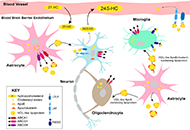 Balancing cholesterol in the brain: from synthesis to disposalOpen AccessReviewThe cholesterol is a vital component of cell membranes and myelin sheaths, and a precursor for essential molecules such as steroid hormones. In humans, cholesterol is partially obtained through the ...Lydia Qian ... Andrew J. BrownPublished: January 05, 2022 Explor Neuroprot Ther. DOI: 10.37349/ent.2022.00015
Balancing cholesterol in the brain: from synthesis to disposalOpen AccessReviewThe cholesterol is a vital component of cell membranes and myelin sheaths, and a precursor for essential molecules such as steroid hormones. In humans, cholesterol is partially obtained through the ...Lydia Qian ... Andrew J. BrownPublished: January 05, 2022 Explor Neuroprot Ther. DOI: 10.37349/ent.2022.00015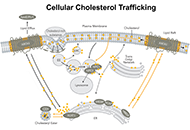 Blocking cholesterol storage to treat Alzheimer’s diseaseOpen AccessReviewCholesterol serves as an essential lipid molecule in various membrane organelles of mammalian cells. The metabolites of cholesterol also play important functions. Acyl-coenzyme A: cholesterol acyltr...Ta Yuan Chang ... James G. GowPublished: December 30, 2021 Explor Neuroprot Ther. DOI: 10.37349/ent.2021.00014
Blocking cholesterol storage to treat Alzheimer’s diseaseOpen AccessReviewCholesterol serves as an essential lipid molecule in various membrane organelles of mammalian cells. The metabolites of cholesterol also play important functions. Acyl-coenzyme A: cholesterol acyltr...Ta Yuan Chang ... James G. GowPublished: December 30, 2021 Explor Neuroprot Ther. DOI: 10.37349/ent.2021.00014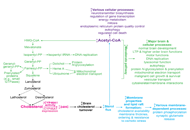 Targeting cytochrome P450 46A1 and brain cholesterol 24-hydroxylation to treat neurodegenerative diseasesOpen AccessReviewThe brain cholesterol content is determined by the balance between the pathways of in situ biosynthesis and cholesterol elimination via 24-hydroxylation catalyzed by cytochrome P450 46A1 (CYP46A1). ...Irina A. PikulevaPublished: December 30, 2021 Explor Neuroprot Ther. DOI: 10.37349/ent.2021.00013
Targeting cytochrome P450 46A1 and brain cholesterol 24-hydroxylation to treat neurodegenerative diseasesOpen AccessReviewThe brain cholesterol content is determined by the balance between the pathways of in situ biosynthesis and cholesterol elimination via 24-hydroxylation catalyzed by cytochrome P450 46A1 (CYP46A1). ...Irina A. PikulevaPublished: December 30, 2021 Explor Neuroprot Ther. DOI: 10.37349/ent.2021.00013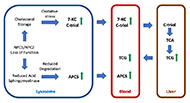 Advancing diagnosis and treatment of Niemann-Pick C disease through biomarker discoveryOpen AccessReviewNiemann-Pick C disease is a rare neurodegenerative, lysosomal storage disease caused by accumulation of unesterified cholesterol. Diagnosis of the disease is often delayed due to its rarity, the het...Xuntian Jiang, Daniel S. OryPublished: December 30, 2021 Explor Neuroprot Ther. DOI: 10.37349/ent.2021.00012
Advancing diagnosis and treatment of Niemann-Pick C disease through biomarker discoveryOpen AccessReviewNiemann-Pick C disease is a rare neurodegenerative, lysosomal storage disease caused by accumulation of unesterified cholesterol. Diagnosis of the disease is often delayed due to its rarity, the het...Xuntian Jiang, Daniel S. OryPublished: December 30, 2021 Explor Neuroprot Ther. DOI: 10.37349/ent.2021.00012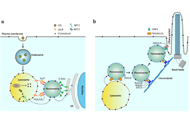 Peroxisomes in intracellular cholesterol transport: from basic physiology to brain pathologyOpen AccessReviewPeroxisomes are actively involved in the metabolism of various lipids including fatty acids, ether phospholipids, bile acids as well as the processing of reactive oxygen and nitrogen species. Recent...Jian Xiao ... Jie LuoPublished: December 30, 2021 Explor Neuroprot Ther. DOI: 10.37349/ent.2021.00011
Peroxisomes in intracellular cholesterol transport: from basic physiology to brain pathologyOpen AccessReviewPeroxisomes are actively involved in the metabolism of various lipids including fatty acids, ether phospholipids, bile acids as well as the processing of reactive oxygen and nitrogen species. Recent...Jian Xiao ... Jie LuoPublished: December 30, 2021 Explor Neuroprot Ther. DOI: 10.37349/ent.2021.00011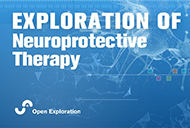 Maternal imprinting, mitochondrial DNA, nuclear DNA and Alzheimer’s diseaseOpen AccessPerspectiveFamilial early-onset Alzheimer’s disease (AD) is more probable in individuals coming from mothers diagnosed with AD than from fathers diagnosed with AD. Studies in animal models have show...Alberto Pérez-Mediavilla, Marta ZamarbidePublished: October 29, 2021 Explor Neuroprot Ther. DOI: 10.37349/ent.2021.00010
Maternal imprinting, mitochondrial DNA, nuclear DNA and Alzheimer’s diseaseOpen AccessPerspectiveFamilial early-onset Alzheimer’s disease (AD) is more probable in individuals coming from mothers diagnosed with AD than from fathers diagnosed with AD. Studies in animal models have show...Alberto Pérez-Mediavilla, Marta ZamarbidePublished: October 29, 2021 Explor Neuroprot Ther. DOI: 10.37349/ent.2021.00010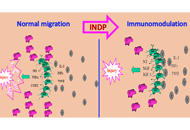 Immunization with neural-derived peptides as a neuroprotective therapy for spinal cord injuryOpen AccessReviewSpinal cord injury (SCI) induces several destructive events that develop immediately after the primary insult. These phenomena increase tissue damage; that is why, numerous therapeutic approaches ar...Andrea Paola Ibarra-García, Antonio IbarraPublished: October 29, 2021 Explor Neuroprot Ther. DOI: 10.37349/ent.2021.00009
Immunization with neural-derived peptides as a neuroprotective therapy for spinal cord injuryOpen AccessReviewSpinal cord injury (SCI) induces several destructive events that develop immediately after the primary insult. These phenomena increase tissue damage; that is why, numerous therapeutic approaches ar...Andrea Paola Ibarra-García, Antonio IbarraPublished: October 29, 2021 Explor Neuroprot Ther. DOI: 10.37349/ent.2021.00009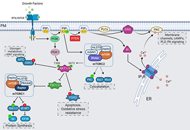 Striking a balance: PIP2 and PIP3 signaling in neuronal health and diseaseOpen AccessReviewPhosphoinositides are membrane phospholipids involved in a variety of cellular processes like growth, development, metabolism, and transport. This review focuses on the maintenance of cellular homeo...Kamran Tariq, Bryan W. LuikartPublished: October 29, 2021 Explor Neuroprot Ther. DOI: 10.37349/ent.2021.00008
Striking a balance: PIP2 and PIP3 signaling in neuronal health and diseaseOpen AccessReviewPhosphoinositides are membrane phospholipids involved in a variety of cellular processes like growth, development, metabolism, and transport. This review focuses on the maintenance of cellular homeo...Kamran Tariq, Bryan W. LuikartPublished: October 29, 2021 Explor Neuroprot Ther. DOI: 10.37349/ent.2021.00008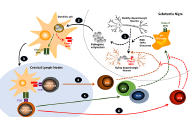 T-cell based immunotherapies for Parkinson’s diseaseOpen AccessReviewCurrent evidence indicates that neurodegeneration of dopaminergic neurons of the substantia nigra associated to Parkinson's disease is a consequence of a neuroinflammatory process in whic...Rodrigo PachecoPublished: October 29, 2021 Explor Neuroprot Ther. DOI: 10.37349/ent.2021.00007
T-cell based immunotherapies for Parkinson’s diseaseOpen AccessReviewCurrent evidence indicates that neurodegeneration of dopaminergic neurons of the substantia nigra associated to Parkinson's disease is a consequence of a neuroinflammatory process in whic...Rodrigo PachecoPublished: October 29, 2021 Explor Neuroprot Ther. DOI: 10.37349/ent.2021.00007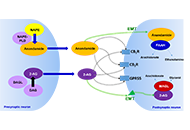 Therapeutic potential of the cannabinoid receptor 2 in neuropsychiatryOpen AccessReviewSince the identification and cloning of the cannabinoid receptor 2 (CB2R), several studies focused on the characterization of its physiological and pathological role. Initially, CB2R was considered ...María S. García-Gutiérrez ... Jorge ManzanaresPublished: August 05, 2021 Explor Neuroprot Ther. DOI: 10.37349/ent.2021.00006
Therapeutic potential of the cannabinoid receptor 2 in neuropsychiatryOpen AccessReviewSince the identification and cloning of the cannabinoid receptor 2 (CB2R), several studies focused on the characterization of its physiological and pathological role. Initially, CB2R was considered ...María S. García-Gutiérrez ... Jorge ManzanaresPublished: August 05, 2021 Explor Neuroprot Ther. DOI: 10.37349/ent.2021.00006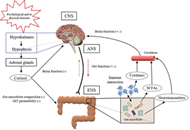 Gut microbial imbalance and neurodegenerative proteinopathies: from molecular mechanisms to prospects of clinical applicationsOpen AccessReviewThe pathogenic basis behind some of the most prevalent neurodegenerative diseases in advanced societies, known as proteinopathies, deals with alterations in protein homeostasis. Despite the broad di...Paula Alonso-García ... Eva Martínez-PinillaPublished: August 05, 2021 Explor Neuroprot Ther. DOI: 10.37349/ent.2021.00005
Gut microbial imbalance and neurodegenerative proteinopathies: from molecular mechanisms to prospects of clinical applicationsOpen AccessReviewThe pathogenic basis behind some of the most prevalent neurodegenerative diseases in advanced societies, known as proteinopathies, deals with alterations in protein homeostasis. Despite the broad di...Paula Alonso-García ... Eva Martínez-PinillaPublished: August 05, 2021 Explor Neuroprot Ther. DOI: 10.37349/ent.2021.00005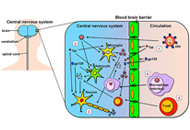 Neurological complications during HIV infectionOpen AccessReviewEarly in the course of infection, human immunodeficiency virus (HIV) is able to enter the central nervous system where it stablishes a permanent reservoir. Current antiretroviral therapies do not ef...Jose M. Martinez-NavioPublished: August 05, 2021 Explor Neuroprot Ther. DOI: 10.37349/ent.2021.00004
Neurological complications during HIV infectionOpen AccessReviewEarly in the course of infection, human immunodeficiency virus (HIV) is able to enter the central nervous system where it stablishes a permanent reservoir. Current antiretroviral therapies do not ef...Jose M. Martinez-NavioPublished: August 05, 2021 Explor Neuroprot Ther. DOI: 10.37349/ent.2021.00004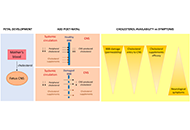 Cholesterol in autism spectrum disordersOpen AccessReviewThe autism spectrum disorder (ASD) comprises a series of neurological diseases that share serious alterations of the development of the central nervous system. The degree of disability may vary so t...Rafael Franco ... Irene Reyes-ResinaPublished: August 05, 2021 Explor Neuroprot Ther. DOI: 10.37349/ent.2021.00003
Cholesterol in autism spectrum disordersOpen AccessReviewThe autism spectrum disorder (ASD) comprises a series of neurological diseases that share serious alterations of the development of the central nervous system. The degree of disability may vary so t...Rafael Franco ... Irene Reyes-ResinaPublished: August 05, 2021 Explor Neuroprot Ther. DOI: 10.37349/ent.2021.00003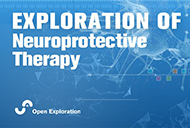 P2X7 receptor involvement in COVID-19 diseaseOpen AccessLetter to the EditorPeter IllesPublished: August 05, 2021 Explor Neuroprot Ther. DOI: 10.37349/ent.2021.00002
P2X7 receptor involvement in COVID-19 diseaseOpen AccessLetter to the EditorPeter IllesPublished: August 05, 2021 Explor Neuroprot Ther. DOI: 10.37349/ent.2021.00002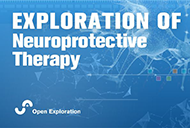 Science plus technology to address challenges in determining the efficacy of neuroprotective/neurorestorative therapiesOpen AccessEditorialRafael FrancoPublished: August 05, 2021 Explor Neuroprot Ther. DOI: 10.37349/ent.2021.00001
Science plus technology to address challenges in determining the efficacy of neuroprotective/neurorestorative therapiesOpen AccessEditorialRafael FrancoPublished: August 05, 2021 Explor Neuroprot Ther. DOI: 10.37349/ent.2021.00001 -